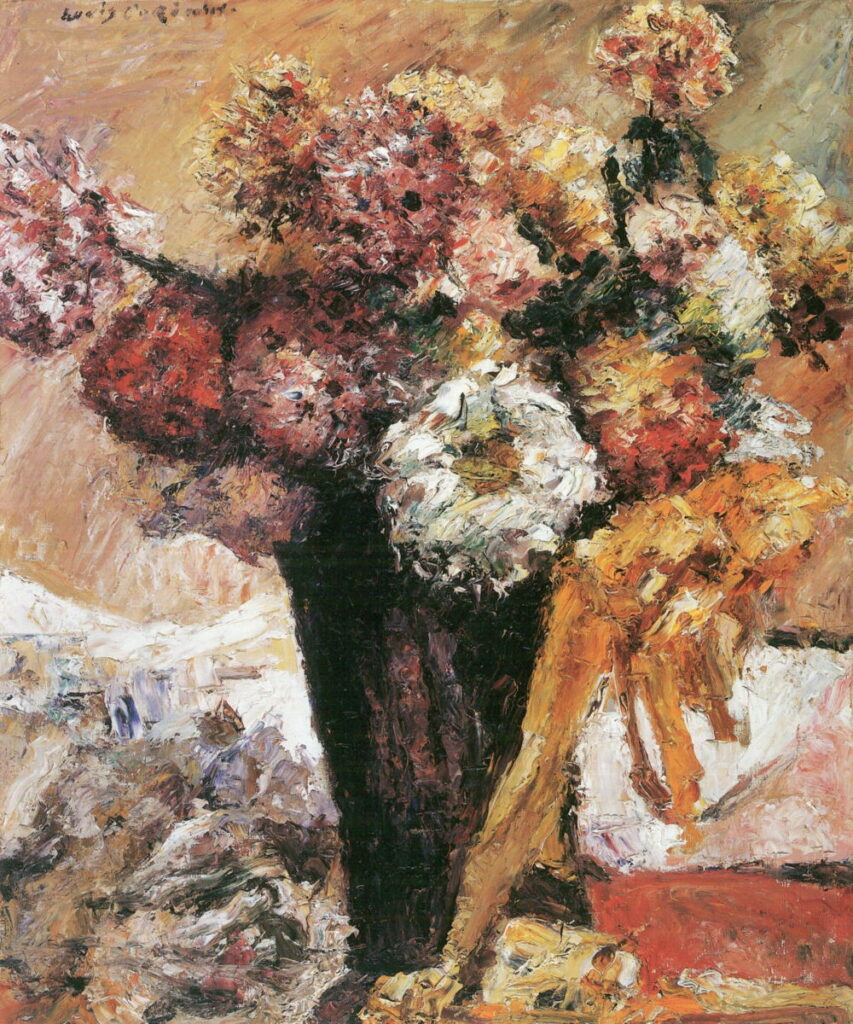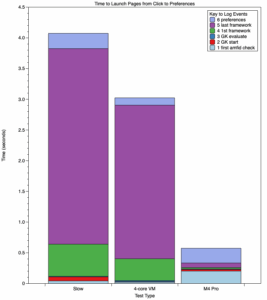Paintings of 1923: 2 Portraits, Still Life

This is the second in my series of articles looking at paintings believed to have been created a century ago, in 1923. This covers portraits, non-narrative figurative works, and still lifes. Subsequent articles will show a selection of landscapes.
Emil Orlík (1870–1932), Portrait of Albert Einstein (1923), print, further details not known. Wikimedia Commons.
Although little-known today, Emil Orlík established himself a reputation for creating portraits of eminent people in the arts, including Lovis Corinth, Max Slevogt, Max Klinger, Koloman Moser, Gustav Mahler, Richard Strauss, and Thomas Mann. This print of his Portrait of Albert Einstein (1879-1955) shows the theoretical physicist at the age of about 44, shortly after he had received his Nobel Prize.
Lovis Corinth (1858–1925), Self-portrait in a Straw Hat (1923), cardboard, 70 x 85 cm, Kunstmuseum Bern, Switzerland. Wikimedia Commons.
Lovis Corinth painted one of his many self-portraits, this one in a Straw Hat, during this time of his frenetic painting. He had recovered well after his severe stroke, and here looks in quite rude health, although he was to live only a further two years.
Joseph Stella (1877–1946), Kathleen Millay (c 1923-24), crayon and metalpoint on paper, 71.1 x 55.9 cm, Cheekwood Museum of Art, Nashville, TN. The Athenaeum.
On the other side of the Atlantic, also late in his career, Joseph Stella developed a novel drawing technique combining traditional metalpoint with modern crayons, which he used in this intimate portrait of the American author Kathleen Millay (1896-1943).
Meanwhile, two years before Pierre Bonnard married his longstanding partner Marthe, he continued to paint her when she was taking her therapeutic baths.
Pierre Bonnard (1867-1947), Nude Bending Down (1923), oil on canvas, 57.1 x 52.7 cm, The Tate Gallery (Bequeathed by the Hon. Mrs A.E. Pleydell-Bouverie through the Friends of the Tate Gallery 1968), London. Photographic Rights © Tate 2018, CC-BY-NC-ND 3.0 (Unported), https://www.tate.org.uk/art/artworks/bonnard-nude-bending-down-t01076
She appears in this bathroom scene in Bonnard’s Nude Bending Down. She steadies herself with her right hand against furniture, perhaps a high dressing table, at the left edge of the painting, as she stands on her left leg with its white high-heeled shoe. Although it’s supposed that she is wiping her right calf, the towels are on racks which frame the right side of the painting, not in her hand. The difference in colour of her lower right leg suggests that she may be pulling a stocking on with her left hand. Her head is bent down, concentrating on that activity, and obscuring her face.
Albin Egger-Lienz (1868–1926), Boy at the Spring (1923), oil on canvas, 85 × 126 cm, Leopold Museum (Die Sammlung Leopold), Vienna, Austria. Wikimedia Commons.
Albin Egger-Lienz’s Boy at the Spring shows a peasant boy lying to lick and suck up the last few drops of water from a feeble spring.
Charles Demuth (1883–1935), Amaryllis (c 1923), watercolour on paper, 45.7 x 30.5 cm, Cleveland Museum of Art, Cleveland, OH. The Athenaeum.
The American painter Charles Demuth sought solace from his episodes of illness resulting from his diabetes by painting floral arrangements in watercolour. Among them is this Amaryllis, which must have coincided with the time that he was able to start receiving insulin injections.
James Bolivar Manson (1879–1945), Michaelmas Daisies (c 1923), oil on canvas, 61 x 50.8 cm, The Tate Gallery (Presented by subscribers 1923), London. © The Tate Gallery and Photographic Rights © Tate (2016), CC-BY-NC-ND 3.0 (Unported), https://www.tate.org.uk/art/artworks/manson-michaelmas-daisies-n01355
Today, James Bolivar Manson is mainly remembered as a former Director of the Tate Gallery in London, but he had a long association with Lucien Pissarro and Walter Sickert, including a period as secretary to the Camden Town Group. His painting of Michaelmas Daisies may have been one of those shown in his solo exhibition at the Leicester Galleries in 1923. Seven years later he was appointed Director of the Tate.
Lovis Corinth (1858–1925), Chrysanthemums II (1923), oil on canvas, 96 × 80 cm, Private collection. Wikimedia Commons.
My final painting is another by Lovis Corinth, this time his floral still life of Chrysanthemums II, my favourite of his late floral works, as its paint texture matches the fine petals perfectly.



